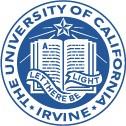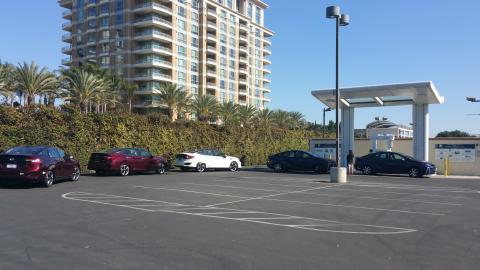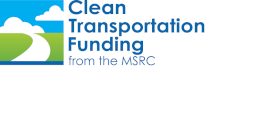
Located on the campus of the University of California, Irvine (UCI), the most frequently used hydrogen fueling station in the state recently received approval to expand its facility, thanks to a special funding partnership between the MSRC, the South Coast Air Quality Management District, and the California Energy Commission. The MSRC will contribute $1 million in Clean Transportation Funding to the project from its Hydrogen Infrastructure Partnership Program, providing more than half of the project capital.
UCI’s hydrogen station was the first publicly accessible station in California, opening in January 2003. In the station’s early days, global manufacturers used it to develop, test and evaluate their fuel station electric vehicle concepts. UCI was the ideal location for this station because it is home to the National Fuel Research Center, whose mission is to facilitate and accelerate the development and deployment of fuel cell technology and fuel cell systems; promote strategic alliances to address the market challenges associated with the installation and integration of fuel cell systems; and to educate and develop resources for the various stakeholders in the fuel cell community. The station was upgraded in late 2003, 2007 and again in 2015 to meet the onset and early years of the fuel cell vehicle retail market.
With the 2015 upgrade, the station was designed to dispense 180 kilograms per day (kg/day), but demand is so high that it generally dispenses in excess of 250 kg/day. “In mid-August of this year, we had a peak of 366 kg in one day,” said Scott Samuelsen, Director of the UCI Advanced Power & Energy Program and Founding Director of the National Fuel Cell Research Center. “Not only is this the most utilized station in the state, we believe it is the most utilized globally.”
Because demand is so high, UCI applied to the MSRC, and the other agencies, for a grant to expand the capacity and daily dispensing capability. The expansion will allow in excess of 800 kg/day of liquid hydrogen to be delivered from one to four fueling dispensers. On-site storage will also be increased, further strengthening the hydrogen supply chain, and limiting impacts to the consumers. At least 33 percent of the hydrogen will be renewable.
“Today, well over 100 vehicles are served on a daily basis, as well as fuel cell electric buses,” Dr. Samuelsen recounted. “On a monthly basis, this would exceed 3,000 individual fills. After the increased capability, more than 8,000 vehicles are projected to be served on a monthly basis.”

Station users have expressed excitement about the station’s expansion. According to Dr. Samuelsen, the station regularly experiences long lines (“up to nine vehicles before patience wanes,” quipped Dr. Samuelsen) to fill up at a dispenser. He said the new station’s capability will have four fueling positions that will both dramatically reduce the wait time and dramatically increase the reliability of the station.
Not only will expanding the station make it more user-friendly, but it also will help improve air quality in Southern California. “Since fuel cell electric vehicles are a zero-emission vehicle, they are a key (along with battery electric vehicles) to removing the automobile as one of the major contributors today to the degradation of air quality in the South Coast Air Basin. A high-performing hydrogen fueling station is a cornerstone in serving the public investing in fuel cell electric vehicles and, just as important, increasing the confidence of those on the edge to invest in a fuel cell electric vehicle,” Dr. Samuelsen explained.
Details are still being finalized, but UCI anticipates that the request for proposals for construction contractors will be released this fall.
